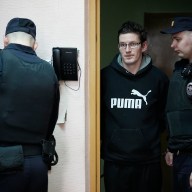 Melinda Taub felt there were stories left to tell after the events of “Romeo and Juliet.”
Melinda Taub felt there were stories left to tell after the events of “Romeo and Juliet.”
Author Melinda Taub refers to her young adult book, “Still Star-Crossed,” as a mash-up of adventure and romance that chronicles “the story of the characters who survive ‘Romeo and Juliet,’ as they fight to stop the deadly feud from reigniting, and try to follow their hearts without repeating the mistakes that killed their friends,” she says.
As you can tell, this isn’t the Shakespeare you remember from high school. “Still Star-Crossed” contains “sword fights, masked assassins, betrayal, a ball, cross-dressing, iambic pentameter, kissing and horses.” You had us at cross-dressing, Melinda. Piqued your interest? Read on:
What is it about the story of “Romeo and Juliet” that made you think to create a sequel of sorts?
I really love the world of “Romeo and Juliet.” It’s essentially a romantic comedy for the first half — it’s full of dancing and kisses and sex jokes, before a series of coincidences and bad choices turn it toward tragedy. It gives you the feeling that that cycle will continue when the play’s done, just like it does in real life. Characters like Mercutio and the nurse feel like they’ve wandered in from other, equally interesting plays. There are more stories to be told about Verona.
I didn’t do as much research as you might think! I tried mostly to use words in the dialogue that Shakespeare would use, so I kept a copy of his complete works handy and searched through it every 30 seconds or so. I also read “Romeo and Juliet” about 15 times, not to mention a lot of his other plays.However, I wanted to really capture the feel of Shakespeare’s style (or at least honor it), and Shakespeare flew by the seat of his pants a lot of the time. If he needed a word that didn’t exist, he made it up. He played pretty fast and loose with history and geography too. So I thought it was only right that I did the same. “Still Star-Crossed” is set in Shakespeare’s Italy, which in some ways is as imaginary as Narnia.
Were you ever worried that writing it in Shakespearean English might throw readers off?
I worried endlessly about the language! For the first few drafts of the book, the dialogue varied wildly — sometimes incomprehensibly Elizabethan, sometimes sounding straight out of “Gossip Girl.” Over time, and with my editor and agent’s help, I found a happy medium. I think anyone, even a total Shakespeare novice, could pick the book up and follow it with no trouble — and hopefully, they’ll find the story exciting enough that they’ll want to.One of the biggest challenges was “thee” and “thou” — if you’re going to write Shakespearean dialogue you gotta have ’em, but to modern ears they sound very fancy. In fact, they indicate informality, and “you” is usually more formal. So I kind of had to develop my own rules for pronouns — rules that were actually stricter than Shakespeare’s.
What were some of the biggest liberties you took in writing this?
The very biggest liberty I took occurs about 50 pages into the book. I don’t wish to spoil it here, but ooh boy you’ll know it when you see it.But really, I took small liberties all over the place. Shakespeare is a bold storyteller who liked to include a little of everything awesome, so I tried to do the same. I’d rather include a word he wouldn’t have used, but would have liked, than fret too much about historical accuracy.
















